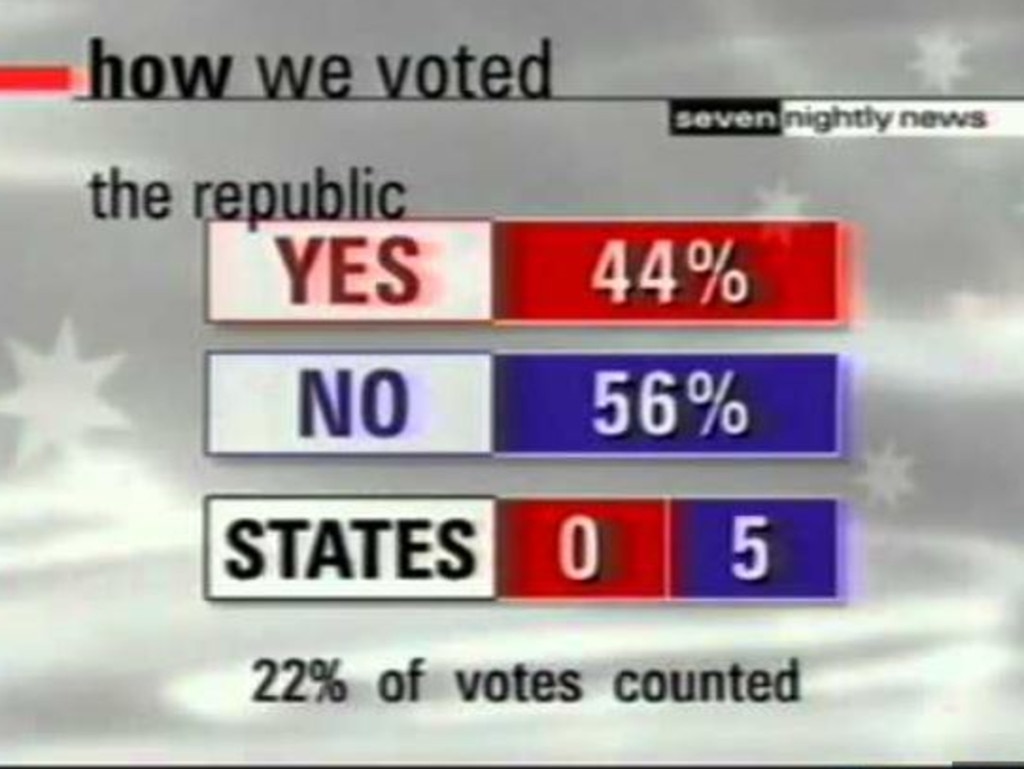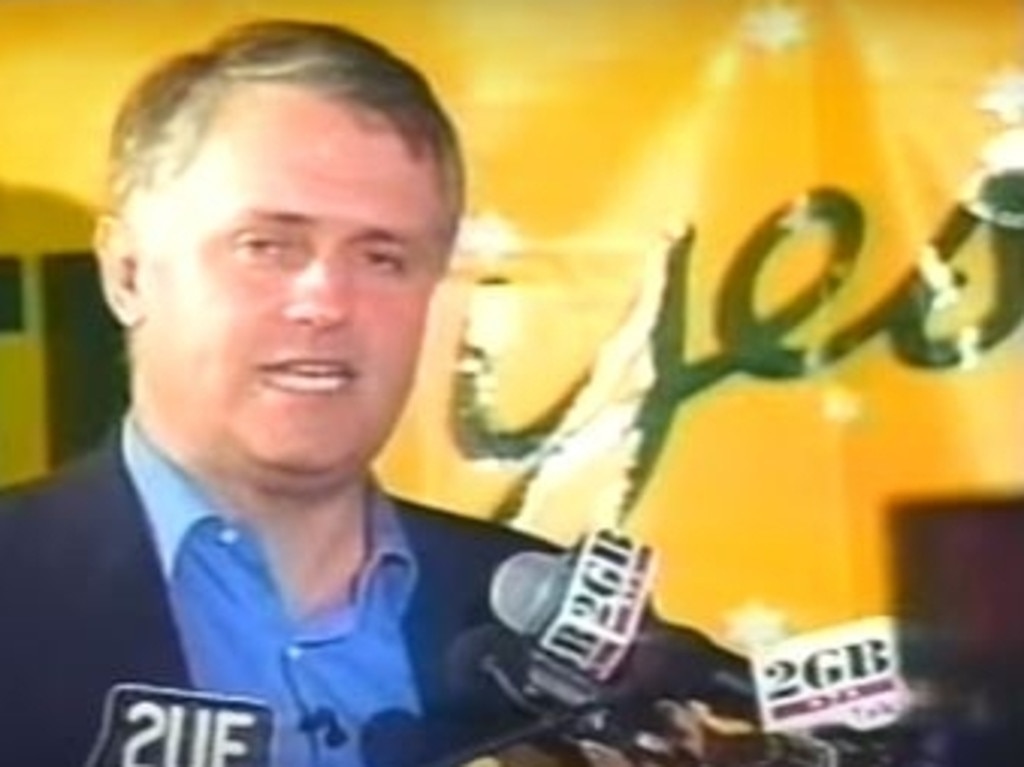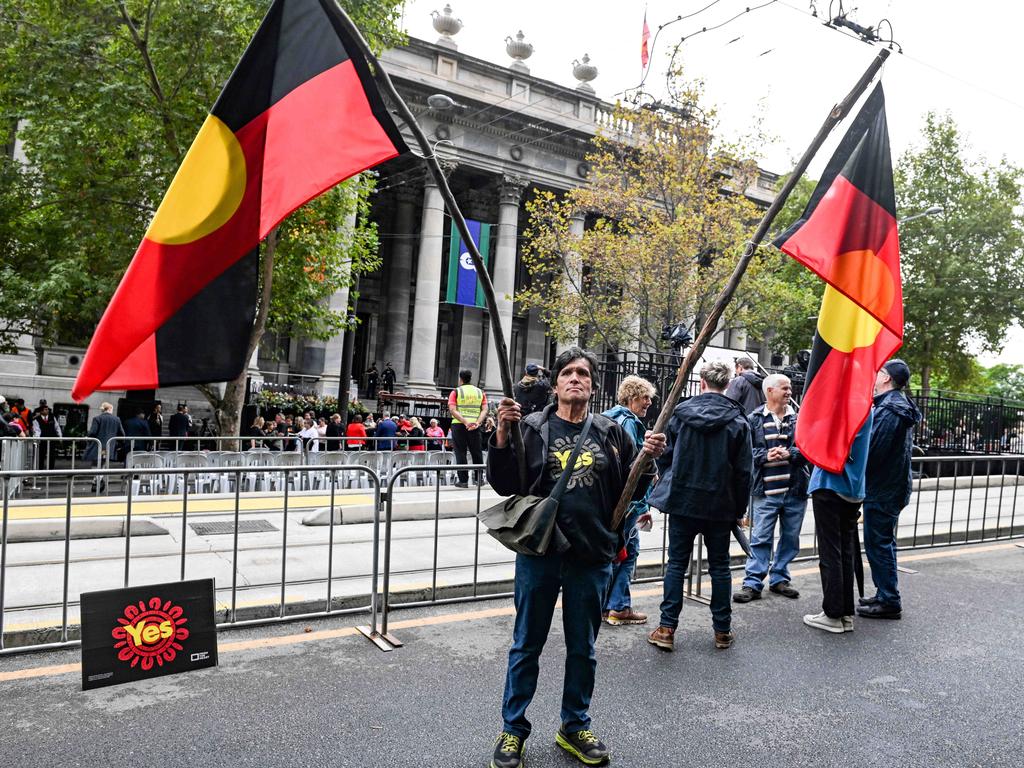90s voting failure could haunt Australia again
A decision Australians made almost 25 years ago came down to one key error. And it looks like history could be repeating.
COMMENT
Stephen Stills is probably best known for being the middle guy in Crosby, Stills and Nash but he also wrote a song called Love The One You’re With. And Australia better start singing it.
In 1999 a majority of Australians were in favour of becoming a republic but were divided on how the president should be elected.
After an exhaustive thrashing out of the issue at the Constitutional Convention, it was recommended the president be elected by a two-thirds majority of parliament.
This moderate model was intended to ensure the appointment would have bipartisan support and not have a popular mandate to rival the prime minister of the day.
Unfortunately a group of more radical republicans didn’t accept this and demanded that the president be directly elected or they would not support the republic at all.
And true to their word these rebel republicans, led by Phil Cleary, teamed up with ultraconservative monarchists to urge Australians to vote no at the republican referendum.
It was a bizarre alliance that produced something akin to a creature on the Island of Dr Moreau.

And it worked. The republic was killed stone dead.
And they were wrong. The direct electionists told the Australian people just to vote down this model and they would then be able to vote on their preferred model.
A quarter of a century later we are still waiting. A poll in January found support for a republic was at just 39 per cent – and that was when it was on the rise.
And yet the direct electionists haven’t given up. I was surprised to learn that The Real Republic is still an official entity, currently occupying some office space in East Brisbane, when I received a very courteous note from its director of communications still arguing the case for the direct election model.
In response, I equally courteously outlined the case for not voting for it: It wasn’t on the ballot paper.
Because this, for better or worse, is the nature of democracy. We can only vote for the choices we have before us, not the ones we wish we had.
And it is something that all of us need to remember as we go to first referendum since the republic fiasco – which, need I remind our perfectionist electionist friends again, is not on the republic.
Instead it is on something far more important. Not how we appoint an almost wholly ceremonial figure who lives in a big house, but how we can make a real and potentially life-changing difference for the First Australians – many of whom are lucky if they live in a house at all.
It’s important to remember how this new referendum came to be. A proposal to properly recognise Indigenous people in the constitution was pushed by Tony Abbott in 2014, to his enduring credit.
That process led to a great gathering at Uluru, the spiritual and geographic heart of Australia, at which Indigenous leaders and representatives from all over the country came together for another constitutional convention in 2017.
They sensibly resolved that symbolic recognition wouldn’t mean much without a practical instrument to tackle the endemic disadvantage so many First Australians suffer.

Thus the Voice was born – and immediately killed off by Malcolm Turnbull, who infamously and wrongly denounced it as a third chamber of parliament. If any conservatives need a reason to support it, perhaps posthumous revenge on St Mal would suffice.
But the real point is that after two-and-a-bit centuries of running this beautiful continent we finally asked its first peoples what they would like, and all they said is it would be nice if they were consulted once in a while.
That’s it. That’s all it is. And that’s all that’s on the table.
And frankly, you can’t ask someone what they want and when they say an apple, hand them a banana.
The Voice model released this week might not be what everybody wanted and it might not be perfect but it is what we have got. And if it doesn’t succeed then there is every chance we will not get another opportunity in many of our lifetimes.

This isn’t hyperbole, it’s history. In 1999 around 128,000 Australians died, with that number rising to around 175,000 in 2022. That’s a lot of republicans who never saw a republic.
Likewise there are many supporters of constitutional recognition who have issues with the Voice and many Voice supporters who have issues with the final wording produced this week.
That is fine and fair enough. But the question for them is not whether what is on offer is better than what they wanted. It’s whether it is better than nothing.
Because nothing is what we will get for a long, long time if this referendum doesn’t succeed – and many more people will die in the meantime.






